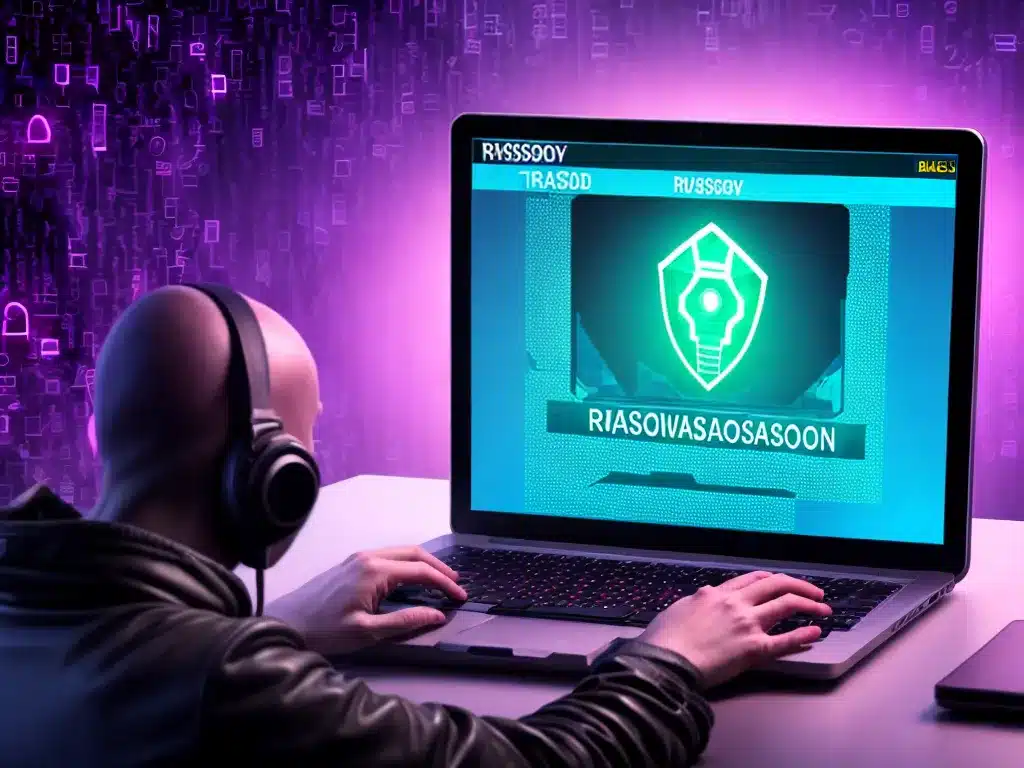
Ransomware Attacks: How To Prevent, Detect and Recover From Ransomware
What is Ransomware?
Ransomware is a form of malicious software (malware) that encrypts files on a device and demands payment in exchange for decryption. The attacker gains access to a system, encrypts the data, and demands a ransom to provide the victim with the key. Ransomware attacks have been rapidly growing in recent years as a lucrative criminal business model.
Some key characteristics of ransomware:
- Encrypts files and makes them inaccessible
- Displays a ransom demand message
- Threatens consequences if ransom is not paid
- Provides decryption upon payment
- Relies on user clicking malicious link or attachment
Major ransomware variants include CryptoLocker, WannaCry, Ryuk, Conti, and LockBit. Attacks often target businesses and organizations where downtime is costly. Healthcare, government, education are frequently victimized.
How Ransomware Spreads
Ransomware typically spreads through:
- Phishing emails – Malicious emails with infected attachments or links that install malware when clicked.
- Compromised websites – Websites infected with malware that gets downloaded to visitors.
- Software vulnerabilities – Exploiting weaknesses in operating systems or apps.
- Remote desktop protocols – Gaining access to exposed RDP ports.
- Supply chain attacks – Infecting software updates and tools used by targets.
Social engineering is a key element in many ransomware attacks. Users are tricked into installing malware or providing access. Education is essential to help employees identify risky emails and websites.
How To Prevent Ransomware Attacks
Preventing ransomware comes down to managing cyber risk across people, processes, and technology:
People
- Train employees on cybersecurity awareness, phishing detection, safe web browsing, and reporting of threats.
- Limit access to sensitive data and systems.
- Beware of social engineering like calls pretending to be tech support.
Processes
- Backup critical data regularly and keep backups offline.
- Install software updates and patches promptly.
- Use caution with email attachments and links.
- Segment networks to limit spread of malware.
Technology
- Use endpoint protection with advanced antivirus, anti-malware.
- Deploy next-gen firewalls with threat intelligence.
- Enable multi-factor authentication wherever possible.
- Monitor for IOCs and signs of compromise.
Taking a layered, defense-in-depth approach across the organization is key for ransomware resilience.
How To Detect Ransomware Activity
Warning signs that may indicate ransomware activity:
- Unusual spikes in CPU or network usage
- Application crashes or display issues
- Error messages about encryption or files
- Files becoming corrupted or inaccessible
- Mapped drives disconnecting
- Users unable to access files or save changes
Some indicators of compromise (IOCs) to monitor:
- Increased RDP login attempts
- Suspicious registry or system file changes
- Signals of data wiping or encryption
- Unknown processes running and contacting C2 servers
- Antivirus alerts for known malware
Active Monitoring and Hunting
- Inspect endpoints for signs of compromise.
- Analyze firewall and email logs for IOCs.
- Monitor process and PowerShell activity for anomalies.
- Use threat intelligence to hunt for known tactics.
Early ransomware detection is crucial. The longer it dwells, the more damage it inflicts.
How To Recover From a Ransomware Attack
If ransomware evades defenses, recovery steps include:
- Isolate infected systems immediately to prevent spread.
- Determine scope of compromise across network.
- Block suspicious IPs, URLs, process hashes.
- Restore data from clean backups if available.
- Investigate attack timeline and methods used.
- Remove malware completely from all systems.
- Harden security based on lessons learned.
Should You Pay the Ransom?
- Paying ransom does not guarantee files will be recovered.
- It encourages and funds more cybercrime.
- Options like backups often provide better recovery.
In most cases, paying the ransom should be avoided if possible. Focus efforts on containment and restoration using existing backups and system images.
Conclusion
Ransomware remains a severe threat, but the risk can be minimized through cybersecurity best practices. Ongoing user education, data backups, access controls, and layered defenses greatly increase resilience. Staying vigilant, monitoring for threats, and having an incident response plan makes recovering from an attack much more achievable.












